Daisies belong to the Asteraceae family and the meaning of daisy is day’s eye because these beautiful flowers open at dawn. Daisies are hardy, drought-tolerant plants that add beauty and charm to your garden.
The cheerful plant produces star-shaped flowers and comes in different varieties. Flowers are found in different colors such as white, purple, pink, and yellow.
Your daisy plants need rich and well-drained soil, plenty of water, and 6 to 8 hours of sunlight. If you provide healthy soil to your daisy plants then the roots of the plant will be healthy.
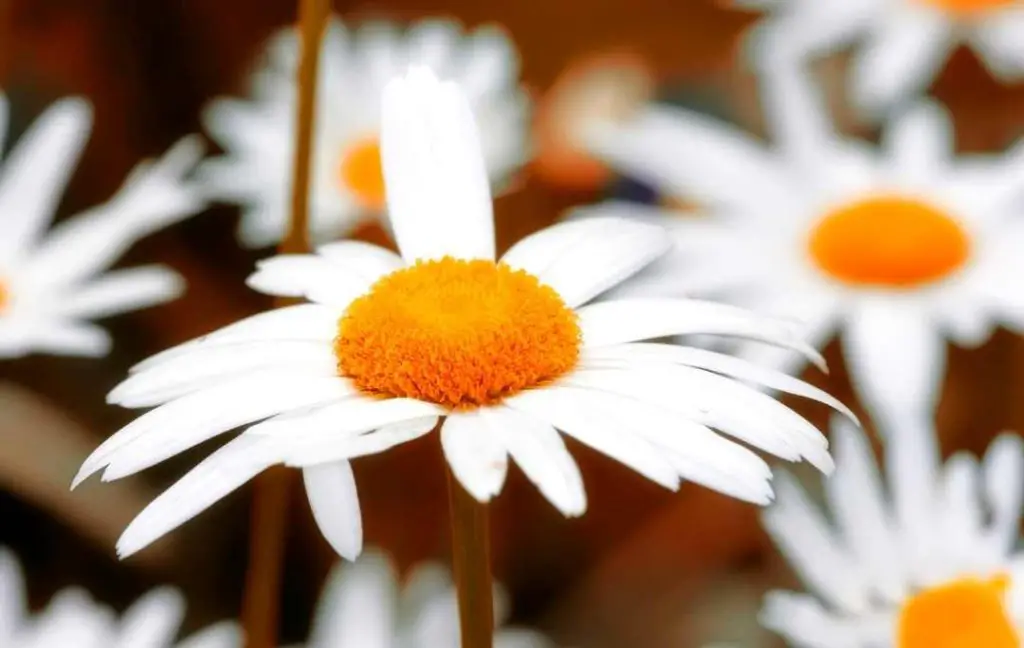
Amending is the best way of increasing the quality of the soil. Before sowing seeds of Daisy, you should choose the variety.
Different Varieties Of Daisies
There are different varieties of daisies which you can choose for your garden. Every type will give the different colors of flowers. Here we are going to give you some best-known varieties.
1- SHASTA DAISY
This is a well-known variety of daisies that have dark green leaves and white flowers. This type has flowers with yellow centers and white petals. Shasta daisy flowers can be used as cut flowers as they can last a week or more in flower arrangements. Well-drained soil is recommended for this type of disease because they don’t like wet feet.
2- COMMON DAISY
The other name of common daisies is English daisy or lawn daisy. The shape of this type of daisy is like a flat disk with a ring of petals.
3- BARBERTON DAISY
This type has single or semi-double blooms. This variety comes in shades of orange, yellow, pink, ok, and red.
4- MARGUERITE DAISY
During the spring season, this type of daisies is at its best. The colors of flowers of this variety are white, pink, and yellow.
5- OXEYE DAISY
This is a vigorous plant and is also considered a weed. It is best for wildflower gardens or natural gardens. This variety has a spreading nature and it can tolerate drought.
6- PAINTED DAISY
The beautiful flowers of this variety have yellow centers and the color of the petals may be red, pink, yellow, white, or violet.
Daisy Sizes You Can Grow
The height of the daisy plants depends on the cultivar which you are growing. So before choosing the variety you should get all the information about that variety. So select that variety that gives you your expected height.
If you are growing Daisy plants in the front bed then you should choose the shorter one. The taller variety is best for the middle or the back.
How To Plant Daisies From Seeds?
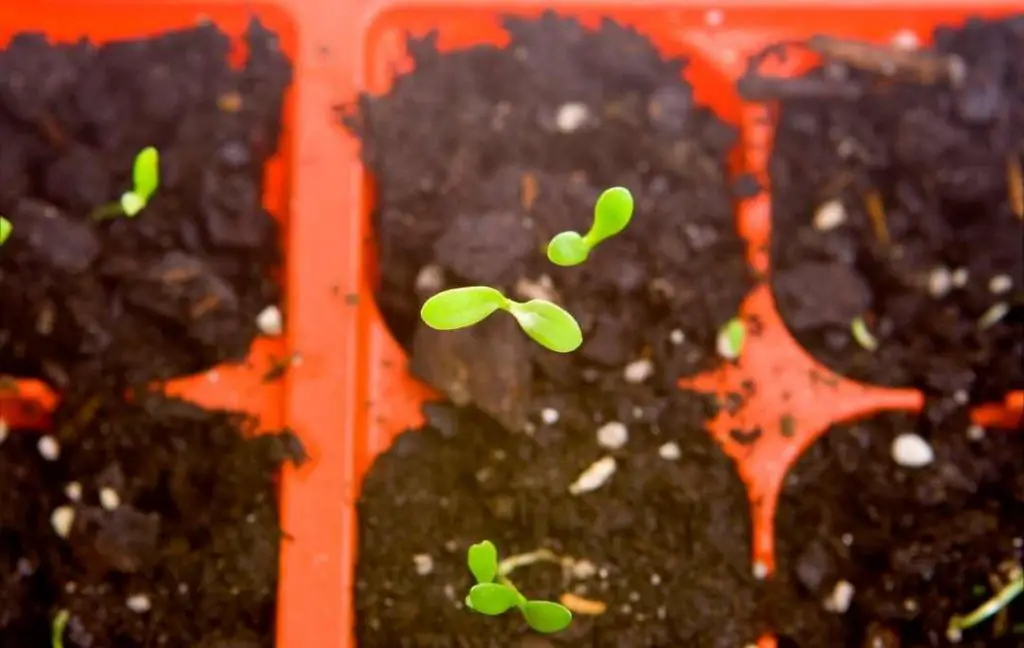
You can grow daisies from seeds or from transplanting potted daisy plants. If you grow daisies from seeds then the plant will start producing flowers in the next year. You should follow the steps which we are going to explain to you one by one.
When You Can Plant Daisies?
The best time for sowing seeds of daisy plants is in fall and early spring. If you are going to sow seeds of Shasta daisy or Oxeye daisy then you can sow them in early winter through late spring.
Late fall and the early spring are best for growing Daisy plants if you are sowing the seeds in the container. If you start your daily plants from seeds then you should not expect the blooms in the first season.
The seeds of Daisy plants will bloom the following spring. In the first year, the Daisy plants focus on their growth, and in the second year on blooms.
Choose A Sunny Spot For Daisy Plants
Light is very important for growing daisy plants so your location should be sunny where you want to grow beautiful daisy flowers. As you are growing your daisy plants from seed, you should keep in mind that the seeds of daisies need light to germinate.
If you want a large number of flowers to decorate your growing area then you should choose a sunny spot where your daisy plants get the appropriate amount of light.
Freely Sow The Seeds
Cover the Daisy seeds with a light layer of soil. As is mentioned above the seeds of the daisies need light to germinate and thin layers of soil give access to light.
What Type Of Soil Is Needed For Daisy Plants?
If you are growing daisies in the pot or raised bed then you can maintain the fertility of the soil. You can use a high-quality potting mix for the healthy growth of your plants.
But if you are growing plants in the ground then you can use a mix of sand, peat moss, compost, and manure for your Daisy plants. Average to sandy soil is perfect for daisies.
Spacing
If you want strong plants then there should be a gap of 18 inches between the plants. There should be appropriate spacing between the plants so they can get the required amount of nutrients without facing any competition.
Watering And Feeding Daisies
Your Daisy plants need regular water so they will produce flower buds. If the stem will dry out then the plant will not recover. Pour water at the base of the Daisy plants so you can avoid mould.
In the summer season, due to the heat of the sun, your plants need more water. In case the rainfall is less than one inch per week then you should increase the frequency of watering your plants.
When Spring comes, apply compost and mulch. It will help to control the population of weeds. Weeds are unwanted plants that steal all the nutrients from the soil.
As a result, there will be competition between the plants and weeds for nutrients. If you want your plant to grow well so you can apply all-purpose organic fertilizer at the start of the growing season. This will promote the strong and sturdy growth of your daisy plants.
Read More
How To Keep Your Daisies Blooming?
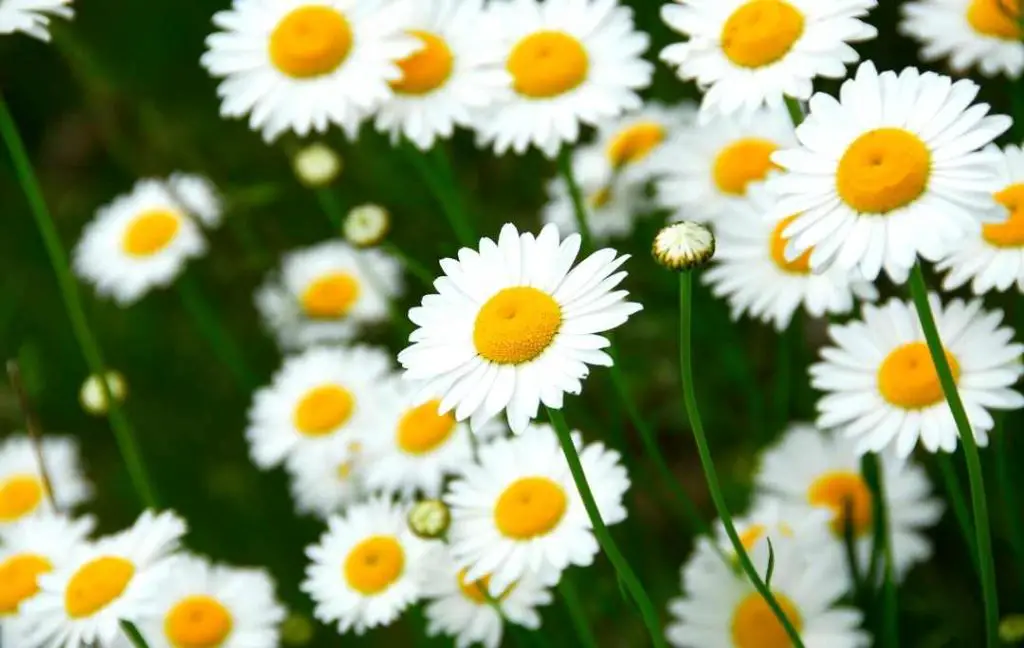
If you want your daisy plants to keep blooming then regular cutting and deadheading is the best way. When you see the blooms fade then trim off them. Deadheading encourages the plant to produce more flowers.
When you remove the spent flowers then this will minimize the growth of mould.
If the root system of the daisy plants becomes bigger then it will lead to the decline of the plants with time. When you see the daisy plant is getting bigger then you should dig it up in clumps in the fall.
Use a sturdy garden shovel and divide the root balls. After that, cut the thick woody centre of the plant. Replant the separated plants and give space of 10 to 12 inches
How To Care For Daisies In Your Garden?
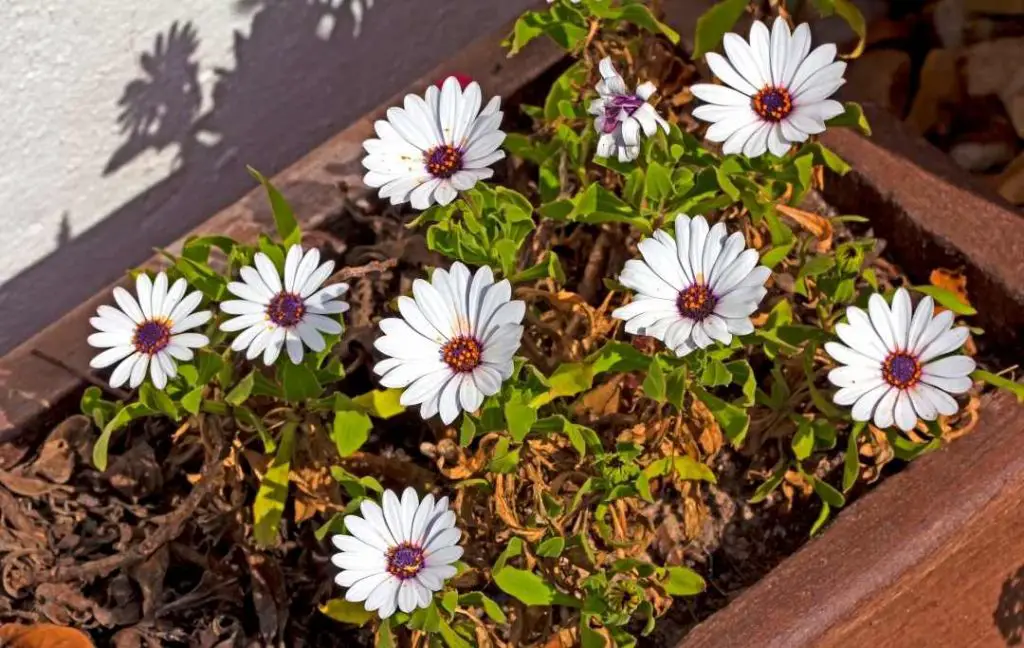
Daisies are low-maintenance and drought-tolerant plants that’s why it is best for beginners. The following are the tips that will help you to make your plants strong from season to season.
1- SUPPORT YOUR DAISIES WITH STAKES
Some varieties of disease can grow tall with time. They may fall due to heavy winds and storms. Staking will give them support and assistance will protect them from heavy rain.
2- DEADHEAD THE BLOOMS TO PROMOTE GROWTH
During the growing season, the daisies can blue multiple times. Whenever you see any flower head That is going to faith then you should remove weight because it will encourage new growth of blooms. A time comes when the plant has finished blooming then you should cut back the stems so the plant will rebloom the following year.
3- PROPAGATE DAISIES BY DIVIDING
If you want your daisy plants to keep blooming their best then the best way is to divide them. Divide your daisy plants every 2 to 3 years. The best time of dividing is early Spring or early fall. You can do the dividing process before the flowers appear and after the flowers fade.
Following are the signs when you should start the dividing.
- When you see less-vigorous foliage growth.
- When there are smaller or fewer flowers on the daisy plants.
- When the plant is looking dead, especially the center of the clump.
Now you are thinking about how the dividing process can be done. The following are the simple steps for this purpose.
- Loosen the soil around the plant with the help of a spade or garden fork. Make sure the roots of the plant remain intact.
- Now take a sharp knife or pruner and divide the plant into pieces. All the pieces must have healthy stems and roots. If you see any damage or diseased piece then at once discard it.
- Now replant all the divisions as desired but there should be space of one to two feet apart.
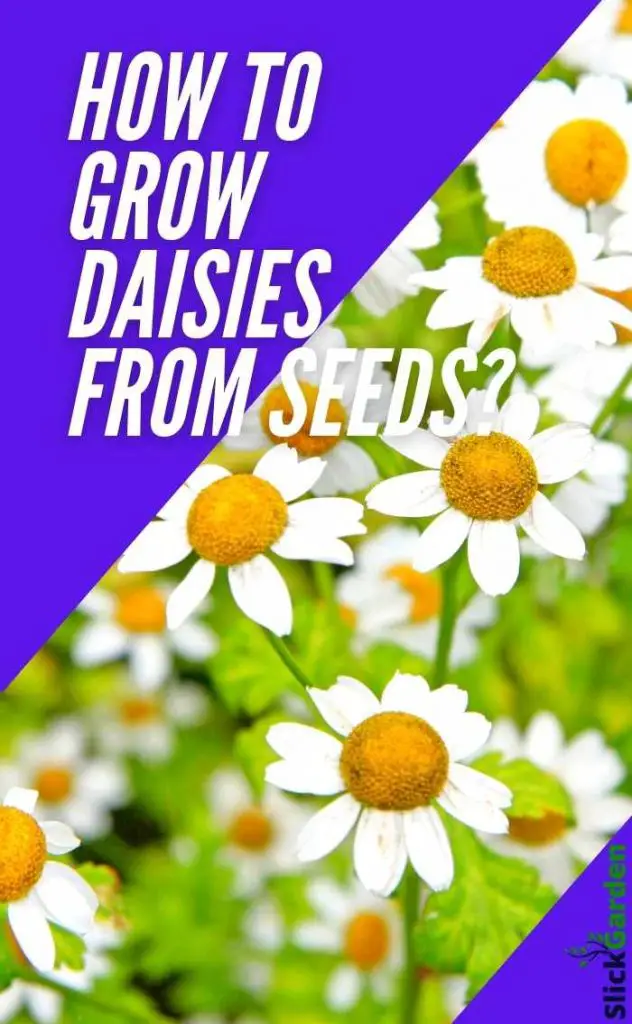
SUCKING PESTS AND DISEASES
Daisies are low maintenance perennial but sometimes they can be adversely impacted by harmful insects. As a grower, you can fight harmful pests by planting companion plants in your growing area.
If you want to avoid such problems then you should choose healthy plants for growth and maintain them with care. The sucking insects such as spider mites, aphids, and white moths can affect your daisy plants.
APHIDS
When aphids attack your daisy plants they leave sticky spots on the leaves. Slowly the leaves start curling up and at the end die. This is a big problem but you can apply a spray of soapy solution on the affected plant.
SPIDER MITES
If you see yellow leaves and webs on the underside of leaves. This is a clear sign of the invasion of spider mites on your plant. Pesticide is the best solution for fighting this problem. You can buy pesticides from any Garden center.
WHITEFLY
You can easily recognize the damage pattern of your plant by whitefly. When you see the leaves are turning yellow and dry. It means your plant is affected and you can also treat it with a solution which is made from soft soap and water.
TIP
Ladybirds and parasitic wasps eat these harmful insects. This is another easy way to avoid these harmful insects. You can buy both beneficial from any specialist retailer. You can also buy them online.
Read More
